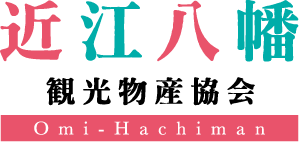Wetlands of Omihachiman
The wetlands of Omihachiman are a protected area of 354 hectares between Lake Biwa and the town of Omihachiman, comprising an intricate landscape of waterways, reedbeds, rice paddies, and villages. The wetlands were formed over centuries as humans created waterways for transport and fishing and cultivated reedbeds. The reeds in the wetlands are famous for their durability and have traditionally been used as roofing and building materials as well as to make screens and blinds. The reeds also perform important natural functions, such as protecting the lakeshore from erosion, cleansing the water of pollutants, and providing a habitat and breeding ground for a variety of waterfowl and fish.



A network of waterways that run through the wetlands connects the Hachimanbori Moat with Lake Biwa and its small subsidiary lake, Nishinoko. The use of these waterways for transport dates back to 1585, when the warlord Toyotomi Hidetsugu (1568–1595) built Hachimanyama Castle. He established the town of Hachiman (now Omihachiman) below it and had the Hachimanbori Moat dug to connect the town with Lake Biwa via the wetlands. Thereafter, the waterways played an important role in making Omihachiman a prosperous center of commerce. Hidetsugu is also said to have begun the tradition of recreational boating on these waterways when he held a tea gathering on a boat in imitation of the aristocratic traditions of entertaining on boats. A boat tour of the wetlands remains the best way to appreciate this landscape.
The wetlands are called “water home” (suigo) in Japanese, a word that expresses the close relationship between the natural landscape and people’s everyday lives. The wetlands of Omihachiman have been named a National Important Cultural Landscape.


